launch on warning
description: nuclear strategy in which a retaliatory strike is launched upon warning of incoming nuclear missiles
18 results
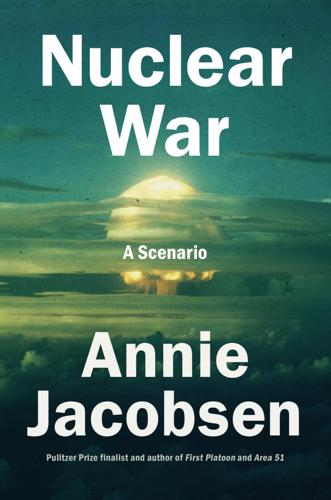
Nuclear War: A Scenario
by
Annie Jacobsen
Published 25 Mar 2024
Once ground radar confirms that an attacking ICBM is on its way to the East Coast, an impossibly dangerous, next-step feature of U.S. nuclear warfighting strategy comes to the fore. This feature centers around a decades-old policy called Launch on Warning. “Once we are warned of a nuclear attack, we prepare to launch,” former secretary of defense William Perry tells us. “This is policy. We do not wait.” Launch on Warning policy is why—and how—America keeps a majority of its deployed nuclear arsenal on ready-for-launch status, also known as Hair-Trigger Alert. HISTORY LESSON NO. 3 Launch on Warning Launch on Warning policy means America will launch its nuclear weapons once its early-warning electronic sensor systems warn of an impending nuclear attack.
…
Said differently, if notified of an impending attack, America will not wait and physically absorb a nuclear blow before launching its own nuclear weapons back at whoever was irrational enough to attack the United States. Launch on Warning “is a key aspect of nuclear war planning the public rarely hears about,” says William Burr, a senior analyst at the National Security Archive at George Washington University in Washington, D.C. Launch on Warning—in place as policy since the height of the Cold War—is also incredibly high-risk. “Inexcusably dangerous,” presidential advisor Paul Nitze warned us decades ago. Launch on Warning during a “time of intense crisis” is a recipe for catastrophe, Nitze said. During the presidential campaign of George W.
…
Like his predecessor, President Obama made no change. When President Biden took office, physicist Frank von Hippel urged him to eliminate the perilous policy. “President Biden . . . should end the launch-on-warning option and the danger it entails of an unintended nuclear Armageddon,” von Hippel wrote in the Bulletin of the Atomic Scientists. But like his predecessors, President Biden has made no change. And so, decades later, we’re still here. With Launch on Warning in effect. * * * ■ 3 MINUTES National Military Command Center, Pentagon Inside the bunker beneath the Pentagon, the secretary of defense and the chairman of the Joint Chiefs of Staff consult with the vice-chairman of the Joint Chiefs, a woman in this scenario who (like General Ellen Pawlikowski) previously commanded the NRO Space Command in Colorado, as well as the Space and Missile Systems Center in California.
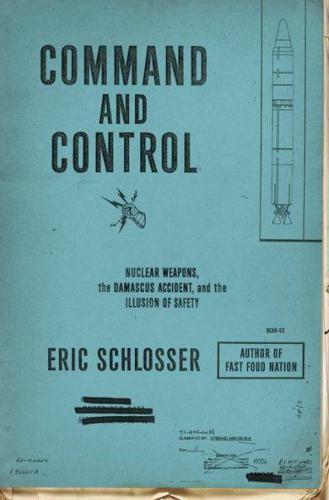
Command and Control: Nuclear Weapons, the Damascus Accident, and the Illusion ofSafety
by
Eric Schlosser
Published 16 Sep 2013
A Soviet surprise attack might wipe out not only the nation’s command-and-control facilities but also its land-based missiles. To deter such an attack, the Strategic Air Command considered a new retaliatory option, known as “launch on warning” or “launch under attack.” As soon as a Soviet attack was detected—and before a single warhead detonated—the United States would launch its land-based missiles, saving them from destruction. A launch-on-warning policy might dissuade the Kremlin from attempting a surprise attack. But it would also place enormous demands on America’s command-and-control system. Missiles launched from Soviet submarines could hit Minuteman and Titan II bases in the central United States within about fifteen minutes; missiles launched from the Soviet Union would arrive in about half an hour.
…
on abolition of weapons, 481–82 launch-on-warning support by, 359 as limited war proponent, 200, 355, 361 on nuclear strategy problems, 353–55 Titan II, opposition to, 351 Kistiakowsky, George B., 40–43, 205–6 position of, xvii, 205 Klaxons, 20, 24, 33, 56, 339 Knacke, Theodor W., 134–35 Koop, Theodore F., 156 Korean Airlines Flight 007, 447 Korean War, 99, 125 Korzenko, John G., Airman, 344 Kulka, Bruce, Captain, 186 Kuter, Laurence S., General, 253–54 Land mines, nuclear, 256–57 Lapierre, Dominique, 14 Launch Complexes, Titan II accidents. See entries under Titan II Launch Complex Launch-on-warning, 357, 359–62, 478 Lay, Bernie Jr., 148 Lay, Gary, 23–26 Leaf, Howard W., General, 377 Leavitt, Lloyd R., Jr., General biographical information, 212–13, 215 follows Martin Marietta plan, 237 and media coverage, 431 position of, xvi, 118, 212 Titan II, lack of experience with, 213 Titan II response plan approval by, 118, 212, 217, 227, 233–34 Lehr, Herbert M., Sergeant, 35–36 LeMay, Curtis E., General accountability demanded by, 346 biographical information, 89–92 civil defense, view of, 150, 154 on counterforce strategy, 131, 133, 201 on Cuban missile crisis, 291, 296 on missile unreliability, 220 on most powerful weapons, 130–31, 201–2, 267 position of, xvii public mockery of, 304–5 SAC improvements by, 89, 92–94, 296 Strategic Air Command (film), portrayal of, 148 Titan II, opposition to, 223 Lemnitzer, Lyman, General, 281–82 Lester, Gregory W., Titan II accident response by, 29, 57, 59, 214 Light, James E., Jr., General, 425–26 Lightning, and accident risk, 41, 43, 222, 328, 329, 376, 436, 474 Lilienthal, David E.
…
Fred Iklé served as the head of the U.S. Arms Control and Disarmament Agency during the Nixon and Ford administrations. Iklé brought to the job an extensive knowledge of nuclear weapons, deterrence theory, and the workings of the command-and-control system. He argued against the adoption of a launch-on-warning policy, worried that it could inadvertently prove to be disastrous. Nevertheless, the policy had a strong military and psychological appeal. “Launching the ICBM force on attack assessment is probably the simplest and most cost-effective way to frustrate a [Soviet] counterforce attack,” a classified RAND report noted.

Cyber War: The Next Threat to National Security and What to Do About It
by
Richard A. Clarke
and
Robert Knake
Published 15 Dec 2010
But if the attack starts on servers in the U.S., it may take a while to tell the President that we really know who attacked us. How sure do you need to be before you respond? The answer will likely depend upon the real-world circumstances at the time. 9. CRISIS INSTABILITY The late Bill Kaufmann once asked me to write a paper on something called “launch on warning.” The Strategic Air Command had the idea that as soon as we saw a Soviet nuclear attack coming we should launch as many bombers as we could and fire our land-based missiles. As the Soviets had improved the accuracy of their missiles, it had become possible for them to destroy our missiles even though we kept them in hardened, underground silos.
…
Perhaps they were attacking, but with a small force aimed at only a few things, should you still throw the kitchen sink at them? Therefore the Air Force had evolved a strategy called “launch under attack,” which essentially meant that you waited until you had a better picture, until some of their missiles’ warheads were already going off in your countryside. The launch on warning strategy was generally thought to be risky because it added to crisis instability, the hair-trigger phenomenon in a period of rising tensions. If you don’t make the right decision quickly, you lose, but if you have to make the decision quickly, you may make a losing decision. What I was able to conclude for Kaufmann was that we had enough missiles at sea, and those missiles had grown sufficiently accurate, that we could ride out an attack and then make a rational decision about what had just happened before we sized our response.
…
Latency: The extent to which a data packet is slowed from moving as quickly as possible on a network or path. Latency is measured in seconds or parts of seconds. The fastest, unimpeded speed is referred to as “line rate.” The size of a fiber-optic cable and the processing speed of routers along a network determine the line rate for that cable and/or router. Launch on Warning: A strategy component that dictates that a nation will initiate conflict—in this case, a cyber war—when intelligence indicators suggest that an opponent has or is about to commence hostile activities. Logic Bomb: A software application or series of instructions that cause a system or network to shut down and/or to erase all data or software on the network.

Hegemony or Survival: America's Quest for Global Dominance
by
Noam Chomsky
Published 1 Jan 2003
Clinton’s STRATCOM was proposing a version of Nixon’s famous “madman theory,” which he and Kissinger applied in an October 1969 nuclear alert that they believed to be risk-free but that might have gotten out of control because of critical factors they ignored—yet another example of the unpredictable consequences of the threat or use of force, which in the current era can be very serious indeed. The US must retain the right of first use of nuclear weapons, STRATCOM advised further, even against non-nuclear powers that have signed the 1970 Nuclear Non-Proliferation Treaty, and must continue to maintain its launch-on-warning posture for strategic nuclear missiles, on hair-trigger alert. It appears that the Clinton administration adopted these proposals.3 The US is unusual, perhaps unique, in the access it allows to high-level planning documents, an important achievement of American democracy. This one, like others, has been available for years but is scarcely known; not a democratic triumph.
…
These and other analyses conclude further that Russia’s “only rational response to the [National Missile Defense] system would be to maintain, and strengthen, the existing Russian nuclear force.”6 The Bush administration announced that “it has no objections to [China’s] plans to build up its small fleet of nuclear missiles,” shifting policy in the hope of gaining Chinese acquiescence to the planned dismantling of core arms control agreements. For similar reasons, Clinton negotiators had encouraged Russia to adopt a launch-on-warning strategy, a proposal that nuclear experts regarded as “pretty bizarre” because we know that Russia’s deteriorating warning systems are “full of holes” and prone to false alerts, increasing the “threat of Russian unauthorized, accidental, and erroneous launches.” Chinese resumption of nuclear testing was also being quietly endorsed, it was reported.
…
Neglecting these risks “could produce possibly the greatest disaster in modern history, and possibly in world history,” said former senator Sam Nunn, cochairman of the Nuclear Threat Initiative, which funded the report. The major threat derives from the thousands of nuclear warheads that each side maintains, with the US increasing its nuclear capabilities, which will drive Russia to heightened alert status and probable implementation of “a ‘launch-on-warning’ approach to warfare requiring rapid reaction” for launching some 3,000 warheads, sharply increasing the danger of nuclear destruction by accident. Nunn, too, dismisses the Bush-Putin treaty of 2002 as meaningless. Like the US, Russia responded to the treaty by rapidly increasing the scale and sophistication of its nuclear and other military systems, motivated in part by concerns about US plans.9 The extent of the problem of “grave proliferation risks” from stockpiles of nuclear, biological, and chemical weapons was also revealed in a study issued by a consortium of influential research centers.

Enlightenment Now: The Case for Reason, Science, Humanism, and Progress
by
Steven Pinker
Published 13 Feb 2018
The original rationale for launch on warning was to thwart a massive first strike that would destroy every missile in its silo and leave the country unable to retaliate. But as I mentioned, states can launch weapons from submarines, which hide in deep water, or from bomber aircraft, which can be sent scrambling, making the weapons invulnerable to a first strike and poised to exact devastating revenge. The decision to retaliate could be made in the cold light of day, when the uncertainty has passed: if a nuclear bomb has been detonated on your territory, you know it. Launch on warning, then, is unnecessary for deterrence and unacceptably dangerous.
…
In a crisis, nuclear weapon states are like an armed homeowner confronting an armed burglar, each tempted to shoot first to avoid being shot.105 In theory this security dilemma or Hobbesian trap can be defused if each side has a second-strike capability, such as missiles in submarines or airborne bombers that can elude a first strike and exact devastating revenge—the condition of Mutual Assured Destruction (MAD). But some debates in nuclear metaphysics raise doubts about whether a second strike can be guaranteed in every conceivable scenario, and whether a nation that depended on it might still be vulnerable to nuclear blackmail. So the United States and Russia maintain the option of “launch on warning,” in which a leader who is advised that his missiles are under attack can decide in the next few minutes whether to use them or lose them. This hair trigger, as critics have called it, could set off a nuclear exchange in response to a false alarm or an accidental or unauthorized launch. The lists of close calls suggest that the probability is disconcertingly greater than zero.
…
When tensions among great powers recede (a long-term trend, even if it’s in abeyance today), they quietly shrink their expensive arsenals.119 Even when rivals are barely speaking, they can cooperate in a reverse arms race using the tactic that the psycholinguist Charles Osgood called Graduated Reciprocation in Tension-Reduction (GRIT), in which one side makes a small unilateral concession with a public invitation that it be reciprocated.120 If, someday, a combination of these developments pared the arsenals down to 200 warheads apiece, it would not only dramatically reduce the chance of an accident but essentially eliminate the possibility of nuclear winter, the truly existential threat.121 In the near term, the greatest menace of nuclear war comes not so much from the number of weapons in existence as from the circumstances in which they might be used. The policy of launch on warning, launch under attack, or hair-trigger alert is truly the stuff of nightmares. No early warning system can perfectly distinguish signal from noise, and a president awakened by the proverbial 3:00 A.M. phone call would have minutes to decide whether to fire his missiles before they were destroyed in their silos.
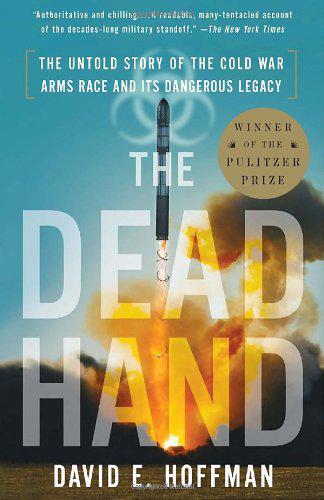
The Dead Hand: The Untold Story of the Cold War Arms Race and Its Dangerous Legacy
by
David Hoffman
Published 1 Jan 2009
What if a radar had mistakenly seen a flock of geese? Or if an early-warning satellite had mistakenly seen a glint off the clouds? These kinds of errors were common to both superpowers. No one wanted to launch nuclear missiles because of a flock of geese. Nonetheless, in the tense standoff of the early 1980s, launch on warning was not dismissed out of hand. The third option was to retaliate only when under attack. Among the Soviet leadership, this was also considered a realistic scenario, especially after they achieved rough parity in missiles with the United States in the 1970s. But launch under attack carried its own risks: what if they didn't survive to retaliate?
…
But launch under attack carried its own risks: what if they didn't survive to retaliate? In this supreme test of human behavior, a hair-trigger decision to launch a nuclear missile attack was one that theorists and planners simply could not fathom nor reliably predict. It was almost impossible to know whether a leader would launch on warning, and take the risk of firing too soon, or wait for an attack, and take the chance of decapitation and destruction. Out of such imponderable choices arose yet another aspect of Perimeter. What if the ailing Chernenko could not decide whether to shoot first, or be shot? What if he was wiped out before he could decide?
…
But Yarynich was surprisingly assertive; he seemed to be "someone who had a lot on his mind." Yarynich told Blair a Kremlin leader might have only two to four minutes to make a decision about retaliation if warned of a missile attack. The Soviet leader might have to make a decision in the dangerous situation known as "launch on warning," in other words, firing off nuclear missiles based entirely on a warning. If a false warning, it could be a disastrous decision. Blair took careful notes. From his American sources, Blair had heard of a Soviet system called the Dead Hand, a computer-driven machine that would, in the event the Soviet leadership were wiped out, launch a retaliatory attack without human hands on the button.
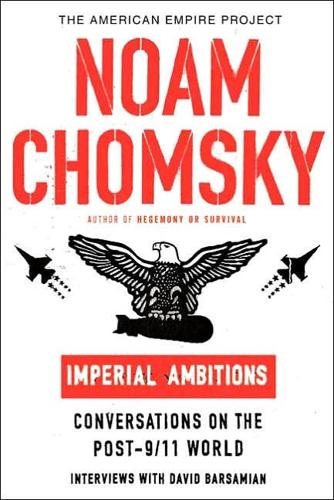
Imperial Ambitions: Conversations on the Post-9/11 World
by
Noam Chomsky
and
David Barsamian
Published 4 Oct 2005
It means hypersonic drones that will keep the whole world under photo surveillance, with high-resolution devices that can tell you if a car is driving across the street in Ankara, or whatever you happen to be interested in, meaning the whole world is under surveillance.33 We probably ultimately won’t even need forward bases, because the United States will be able to launch attacks from a command post in the mountains of Colorado or Montana. How do you think the world will react to this? Russia and China have already reacted with an increase in military spending for offensive military weapons. Russia has shifted its missile system to launch on warning, meaning automated response. Russia’s nuclear weapons program was always extremely dangerous, but now with deteriorating command and control systems, it’s even more dangerous.34 Just to give you an indication of how dangerous, in 1995 we came a few minutes from a nuclear war. Russian computerized systems interpreted a scientific rocket launch from Norway as a first strike and went into action.
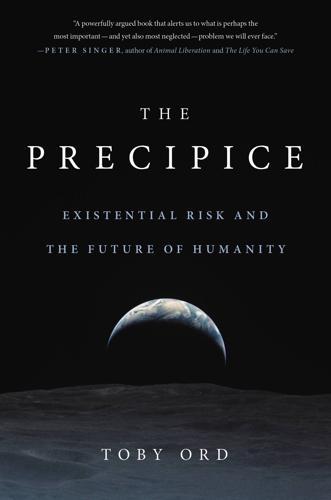
The Precipice: Existential Risk and the Future of Humanity
by
Toby Ord
Published 24 Mar 2020
The false alarm turned out to be caused by sunlight glinting off clouds, which looked to the Soviet satellite system like the flashes of launching rockets. It is often said that Petrov “saved the world” that night. This is an something of exaggeration, as there may well have been several more steps at which nuclear retaliation could have been called off (indeed the two other incidents described here got further through the launch-on-warning process). But it was undeniably a close call: for if the satellite malfunction had reported the glinting sunlight as a hundred missiles instead of five, that may have been enough to trigger a nuclear response.29 Norwegian Rocket Incident: January 25, 1995 Even after the Cold War, the US and Russian missile systems have remained on hair-trigger alert.
…
• Employ blue-sky thinking about any ways current estimates could be underrepresenting the risk by a factor of a hundred or more. Nuclear Weapons • Restart the Intermediate-Range Nuclear Forces Treaty (INF). • Renew the New START arms control treaty, due to expire in February 2021. • Take US ICBMs off hair-trigger alert (officially called Launch on Warning). • Increase the capacity of the International Atomic Energy Agency (IAEA) to verify nations are complying with safeguards agreements. • Work on resolving the key uncertainties in nuclear winter modeling. • Characterize the remaining uncertainties then use Monte Carlo techniques to show the distribution of outcome possibilities, with a special focus on the worst-case possibilities compatible with our current understanding
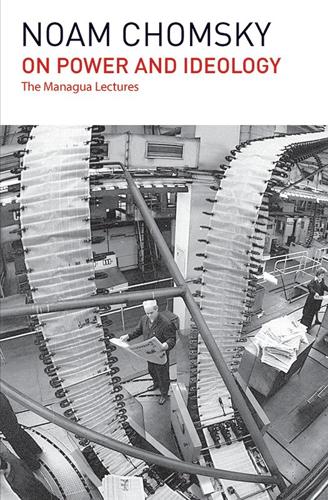
On Power and Ideology
by
Noam Chomsky
Published 7 Jul 2015
Such systems as these drive the adversary to adopt exceedingly dangerous countermeasures, such as computerized response strategies and pre-delegation of authority to lower level officers. Highly accurate missiles with a short flight time reduce the opportunity for human intervention while threatening loss of the deterrent and “decapitation” of the high command. Thus they compel reliance on computer-controlled “launch-on-warning” strategies and on junior officers. Even now, U.S. submarine commanders have substantial authority to launch a nuclear strike, a matter recently discussed by Desmond Ball in the journal International Security. The same is true of Reagan’s SDI, which also enhances the likelihood of a first strike in desperation, for the reasons just mentioned.

The Cold War
by
Robert Cowley
Published 5 May 1992
The logic of the scenarios posited above is debatable. What is not is that ICBM-based mutual deterrence was central to the Cold War, a reality reflected in the strategic vocabulary. Such expressions as circular error probable (CEP), preemptive first strike, survivable second-strike capability, and launch on warning, while not exclusively related to ICBMs, arose within a context shaped by the intercontinental ballistic missile. IRBMs were important mainly as a theater-level deterrent or, as we shall see, a first-strike threat. Manned bombers, the first nuclear delivery system and the only one with intercontinental reach until the late 1950s, influenced Cold War strategic calculations not so much because of the awesome power of their bombs but because, unlike ICBMs, they could be launched and then recalled to “send a message.”
…
Reagan's order had much more to say about Cold War competition, technology transfers, economic and geopolitical policy, and the like, but the war scare of 1983 would flow from the military strategic propositions of the policy. It is a tenet of nuclear strategy that the side in distress, outclassed by the adversary, may maximize its limited chances by shooting first. That is the foundation for such bits of nuclear jargon as “launch on warning” or “preemptive attack.” As 1983 opened, the Kremlin feared an American strategic nuclear advantage, and NSDD-75 shows the Reagan administration indeed intended to act from a position of strength. The addition of SDI to the mix suggested the United States sought means to neutralize such Soviet forces as might remain following an initial nuclear exchange.

On Nature and Language
by
Noam Chomsky
Published 16 Apr 2007
Two years ago, in November 1997, President Clinton formally approved these recommendations in Presidential Decision Directive 60 (PDD 60), highly classified but selectively disclosed. The Directive authorized first use of nuclear weapons and maintains the nuclear weapons delivery triad – Intercontinental Ballistic Missiles (ICBMs), Sea-launched Ballistic Missiles (SLBMs), and long-range bombers. These are to remain in “launch-on-warning posture,” perpetuating the high-alert regime of the past years, with its ever-present danger to survival. New programs were initiated to implement these decisions, among them use of civilian nuclear reactors to produce tritium for nuclear weapons, breaching the barrier between civilian and military use of nuclear power that the NPT sought to establish.

Toast
by
Stross, Charles
Published 1 Jan 2002
Whole villages disappeared, Marsh Arabs, wiped out in the swamps of Eastern Iraq. Reports of yellow rain, people’s skin melting right off their bones. The Iranians got itchy and finally went nuclear. Trouble is, they did so two hours before that speech. Some asshole in Plotsk launched half the Uralskoye SS-20 grid—they went to launch on warning eight months ago—burning south, praise Jesus. Scratch the middle east, period—everything from the Nile to the Khyber Pass is toast. We’re still waiting for the callback on Moscow, but SAC has put the whole Peacemaker force on airborn alert. So far we’ve lost the eastern seaboard as far south as North Virginia and they’ve lost the Donbass basin and Vladivostok.

This Is Only a Test: How Washington D.C. Prepared for Nuclear War
by
David F. Krugler
Published 2 Jan 2006
Zaloga, The Kremlin’s Nuclear Sword: The Rise and Fall of Russia’s Strategic Nuclear Forces, 1945–2000 (Washington, D.C.: Smithsonian Institution Press, 2002), 12–21, 26–8. Zaloga, Kremlin’s Nuclear, 72–5, 241, 254; Miller, The Cold War, 95–9, 110–2. NSC Planning Board, “U.S. Policy on Continental Defense,” July 14, 1960, in William Burr, ed., “Launch on Warning: The Development of U.S. Capabilities, 1959–1979,” National Security Archive Electronic Briefing Book No. 43, April 2001, accessed June 23, 2005 at http://www.gwu.edu/~nsarchiv/ NSAEBB/ NSAEBB43/. Kenneth Schaffel, The Emerging Shield: The Air Force and the Evolution of Continental Air Defense 1945–1960 (Washington, D.C.: USAF, Office of Air Force History, 1991), 210–7. 1 By the Bomb’s Imaginary Light “Army of 3690 from WPA Starts Strengthening Capital Defenses,” WP, June 11, 1940.

Darwin Among the Machines
by
George Dyson
Published 28 Mar 2012
By the time the Ballistic Missile Early Warning system came on-line in 1960, the United States was reduced to fifteen or thirty minutes’ warning of an incoming missile attack. Nuclear stability depended on mutual deterrence, either by threatening to launch missiles at the first sign of enemy attack or by preserving the ability to retaliate after a strike. Launch-on-warning, serviceable as a bluff, would be suicidal in practice, since sooner or later an erroneous warning would arise. So the best way to prevent a nuclear nightmare appeared to be to construct a retaliatory system designed to survive attack. To hide, disperse, or harden missiles was comparatively easy; the difficulty was how to construct a robust system of control.

Little Failure: A Memoir
by
Gary Shteyngart
Published 7 Jan 2014
And then, fifty minutes into the film, when the enormous pines are uprooted by the nuclear blast, and the atomic flash reduces a wedding ceremony to so many skeletons, you really feel that these people have lost something special. For its faults, The Day After is growing up in the early 1980s. This is our vocabulary. Pershing II. SAC Airborne Command. Launch on warning. “This is the Emergency Broadcast System.” “Sir, we need access to the keys and authentication documents.” “Confidence is high. I repeat, confidence is high.” “I want to confirm, is this an exercise? Roger. Copy. This is not an exercise.” “We have a massive attack against the U.S. at this time.
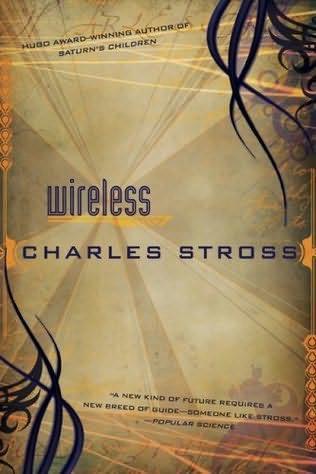
Wireless
by
Charles Stross
Published 7 Jul 2009
Whole villages disappeared, marsh Arabs, wiped out in the swamps of eastern Iraq. Reports of yellow rain, people’s skin melting right off their bones. The Iranians got itchy and finally went nuclear. Trouble is, they did so two hours before that speech. Some asshole in Plotsk launched half the Uralskaye SS-20 grid—they went to launch on warning eight months ago—burning south, praise Jesus. Scratch the Middle East, period—everything from the Nile to the Khyber Pass is toast. We’re still waiting for the callback on Moscow, but SAC has put the whole Peacemaker force on airborne alert. So far we’ve lost the Eastern Seaboard as far south as northern Virginia, and they’ve lost the Donbass Basin and Vladivostok.
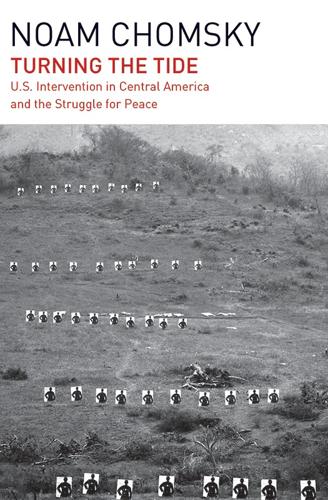
Turning the Tide
by
Noam Chomsky
Published 14 Sep 2015
The major focus of attention has been on the growth of nuclear arsenals and advanced weapons systems, which has been remarkable. The emphasis is misplaced. The size of nuclear arsenals is a real but secondary consideration, though technological advances may pose an extreme hazard, particularly if they compel resort to computer based rapid decision systems and launch-on-warning strategies, in which case war is likely if only from error, inadvertence or misjudgment in time of tension; Reagan’s Strategic Defense Initiative (SDI: “Star Wars”) is particularly dangerous in this respect. Even if nuclear arsenals were vastly reduced, a nuclear interchange would be a devastating catastrophe.

Global Catastrophic Risks
by
Nick Bostrom
and
Milan M. Cirkovic
Published 2 Jul 2008
On the U S side, the top officer on duty at Strategic Command in Omaha, Neb., would brief the president on his nuclear options and their consequences. That officer is allowed all of 30 seconds to deliver the briefing. Then the US or Russian president would have to decide whether to retaliate, and since the command systems on both sides have long been geared for launch-on-warning, the presidents would have little spare time if they desired to get retaliatory nuclear missiles off the ground before they - and possibly the presidents themselves - were vaporized. On the US side, the time allowed to decide would range between zero and 1 2 minutes, depending on the scenario.